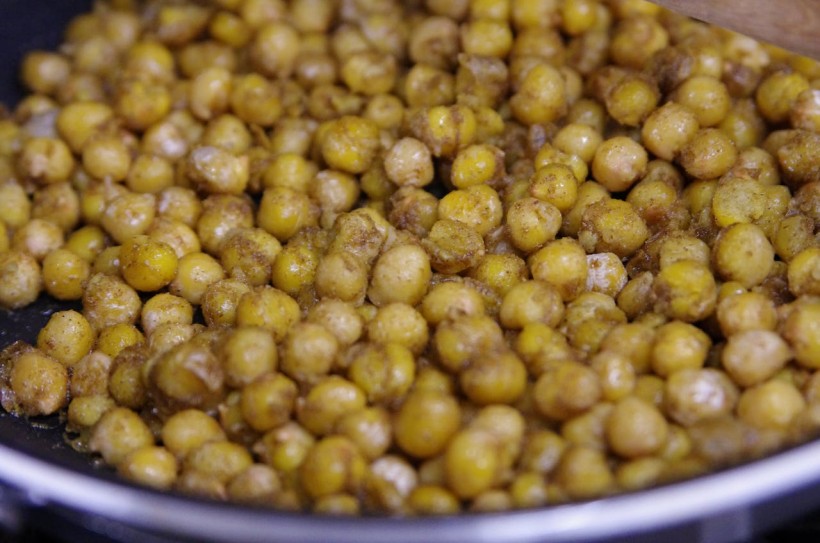For the first time, chickpeas have successfully grown in soil containing moondust. This milestone unlocks doors for food production on the coming lunar missions.
Moondust-Grown Chickpeas
The chickpeas were grown by researchers from Texas A&M College of Agriculture and Life Sciences. These researchers grew the food in mixtures consisting of 70% moondust, or lunar regolith. This was according to the preprint paper that notes the findings.
The moondust is usually inhospitable to plants. However, it was made fertile, thanks to the added mixture of vermicompost and soil fungi. Because of these, the moondust becomes more welcoming to the plant.
The vermicompost and fungi's presence aids with the absorption of toxic contaminants within the moondust. It also boosts the plants' tolerance for environmental stressors and toxins. On top of this, moondust is typically fine, containing small particles. Hence, the vermicompost and fungi aid with improving the soil's structure.
The fungi help trap toxins within biomass and stop too much of it from entering the seeds and vegetation. On the other hand, vermicompost offers nutrients for growth and boosts the soil's physical properties.
According to Suruchi Roychoudhry, a plant molecular biology research fellow from the University of Leeds, adding the two yields two benefits. For one, the fungi could aid the roots of the plant in taking nutrients better. Moreover, they may also boost the soil's texture, making it softer by boosting the organic matter quantities within it. This helps the roots of the plant grow and have better absorption of the nutrients. Such components could be brought into space.
Chickpeas were also specifically chosen due to their beneficial relationship with fungi in the soil. However, it took 120 days for them to mature in moondust, unlike the 100-day-period it takes on Earth soil. All the crops grown on moondust also exhibited stress signs. Nevertheless, researchers are hopeful to develop the moondust soil further in order to enhance chickpea growth and enable other crops to grow as well.
Jessia Atkin, who is a soil and crop sciences graduate student from Texas A&M College of Agriculture and Life Sciences, explains that the Moon does not have Earth-like soil. On Earth, soil contains organic material rich in microorganisms and nutrients that could support the growth of plants. However, these are not present on the Moon. These add to other difficulties, such as toxic elements, radiation, and decreased gravity.
According to Gareth Dorrian, a space science research fellow from the University of Birmingham, moondust is not a naturally remarkable substance for plant growth. This is due to several reasons. For one, it does not have substantial amounts of nitrogen, which plays a crucial role in the formation of proteins in the cells of plants. In the soil of the Earth, nitrogen is rich and plays a part in the nitrogen cycle, which does not happen on the Moon.
Moreover, the lunar regolith is a result of moon rocks from billions of years ago that have been pulverized gradually by micrometeorite hits. This soil is also extremely dry and hardly contains any free water.
ALSO READ: Frying in Space? European Space Agency Explains How It Could Be Possible To Fry in Microgravity
Food Production in Space
The novel efforts are hoped to clear the path towards a future where astronauts who reach the Moon can supplement their food from Earth with space-grown food. The authors note that food sustainability is a significant barrier when it comes to long-term space travel. Providing resources that come from Earth is not a cost-efficient option. Moreover, missions for resupply are not viable to meet long-term life needs in the conditions of deep space.
Plants in outer space could be a source of both oxygen and nutrition. They could reduce dependence on foods that are packaged and the need for resupply. It could also end up extending the duration of missions.
RELATED ARTICLE: Best Diet for Astronauts: Here's How Scientists Build Menu for Space Travelers
Check out more news and information on Space in Science Times.





![Earth's Quasi-Moon Kamo‘oalewa Could Originate From Lunar Surface Not Asteroid Belt [Study]](https://1721181113.rsc.cdn77.org/data/thumbs/full/53275/89/56/50/40/earths-quasi-moon-kamo-oalewa-could-originate-from-lunar-surface-not-asteroid-belt-study.png)









